March 31, 2024
New Episode: Start a Native Plant Garden!
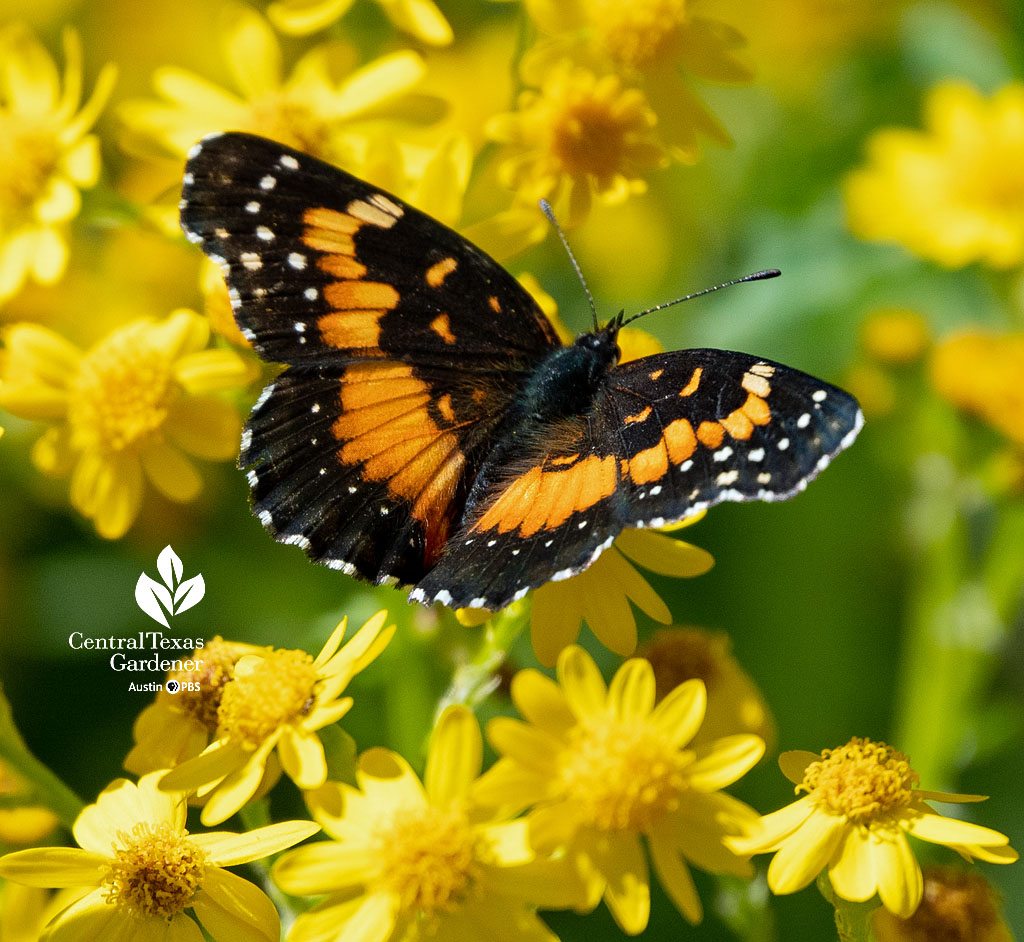
Spring renews friendships in my garden when native golden groundsel greets the up and at ‘em bees, skippers, and butterflies, including this lovely Bordered Patch.
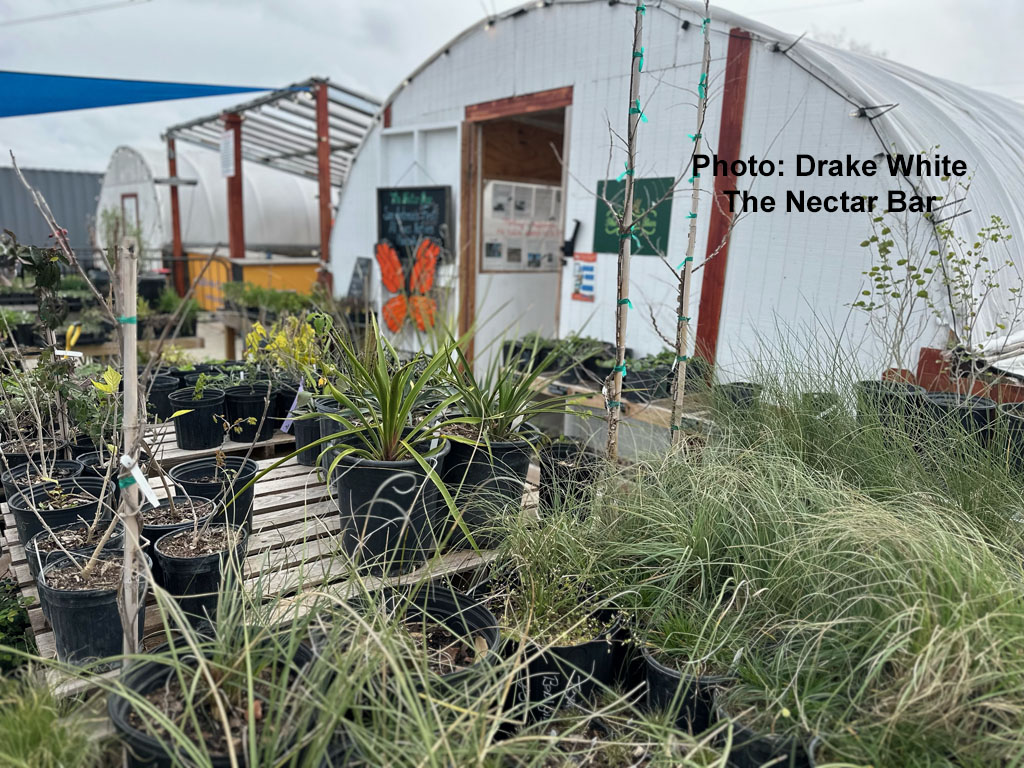
It can be tough to find native plants (I got my groundsel at the Wildflower Center), so I was thrilled when wildlife advocate and Texas Master Naturalist Drake White opened The Nectar Bar last year–the first all-natives plant nursery in San Antonio.
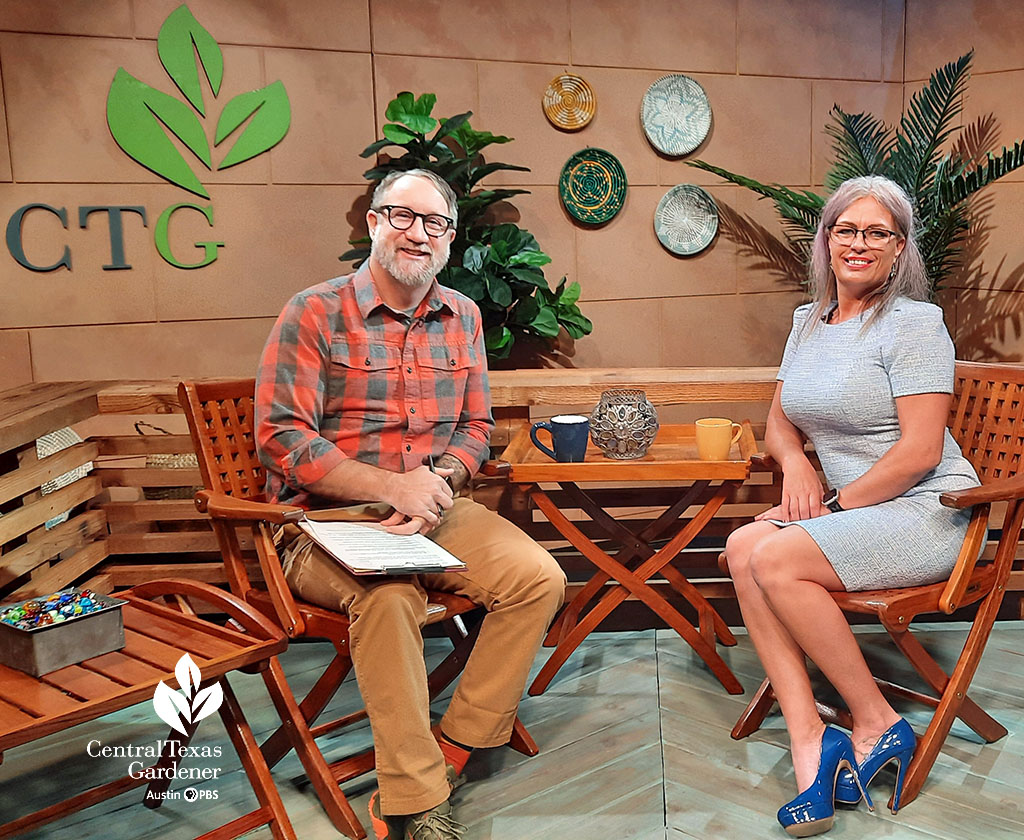
And now we’re delighted that Drake launches CTG’s new spring programs with John Hart! She tells us what prompted her venture into native plants and how that led to actually opening a nursery.
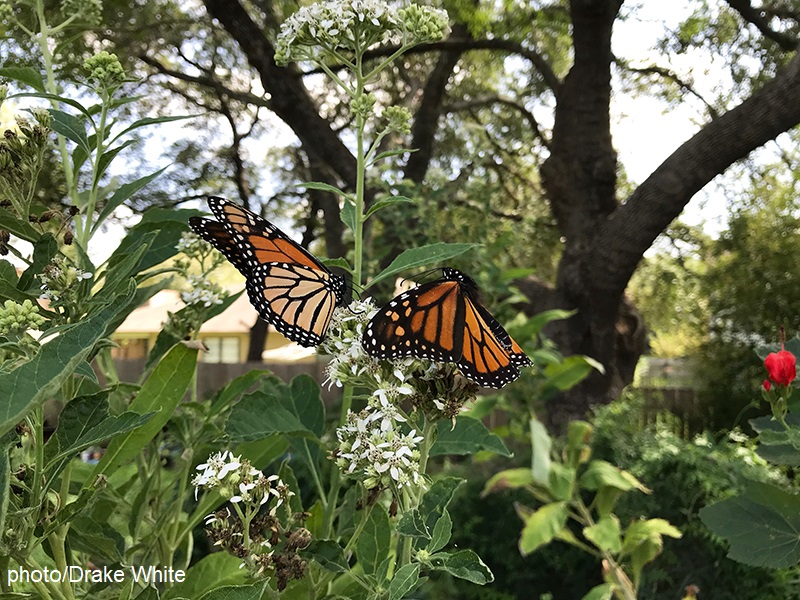
For her, it’s about educating and helping us access plants that keep wildlife–from pollinators to birds and reptiles–in the neighborhood all year with food, water, and shelter. Shade-loving frostweed is one of her favorites for its drought tolerance and bloom time in fall, just as migrating Monarch butterflies come through.
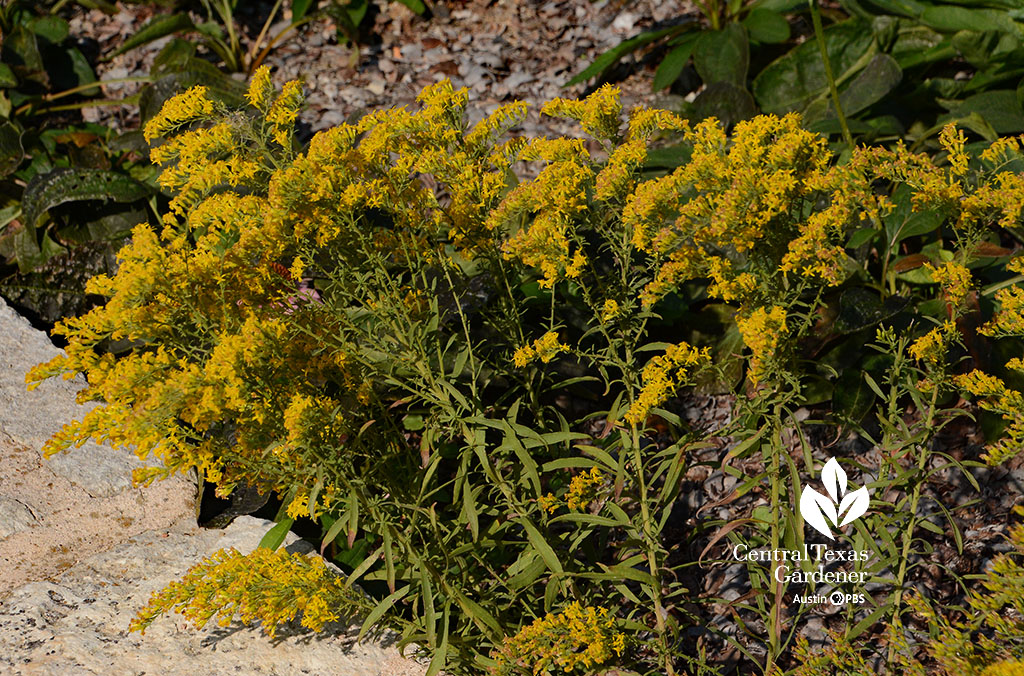
Another one she and John Hart favor is fall-blooming goldenrod. If you want a more compact, less aggressive one, go for gray goldenrod, also called prairie goldenrod (Solidago nemoralis).
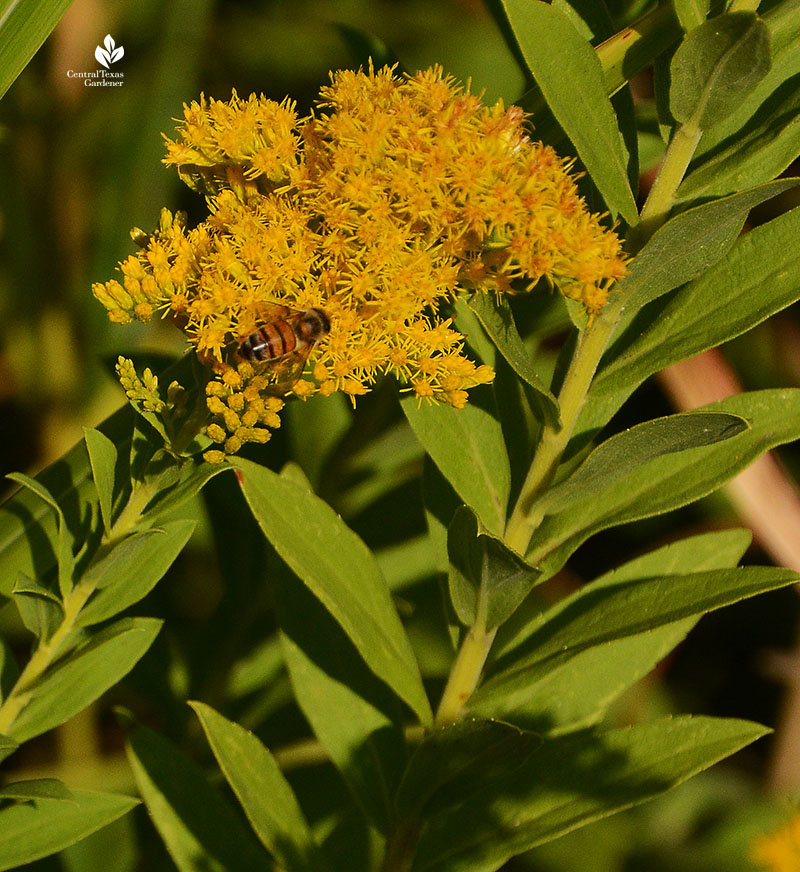
Any goldenrod you get now promises a full house when it blooms late summer to fall.
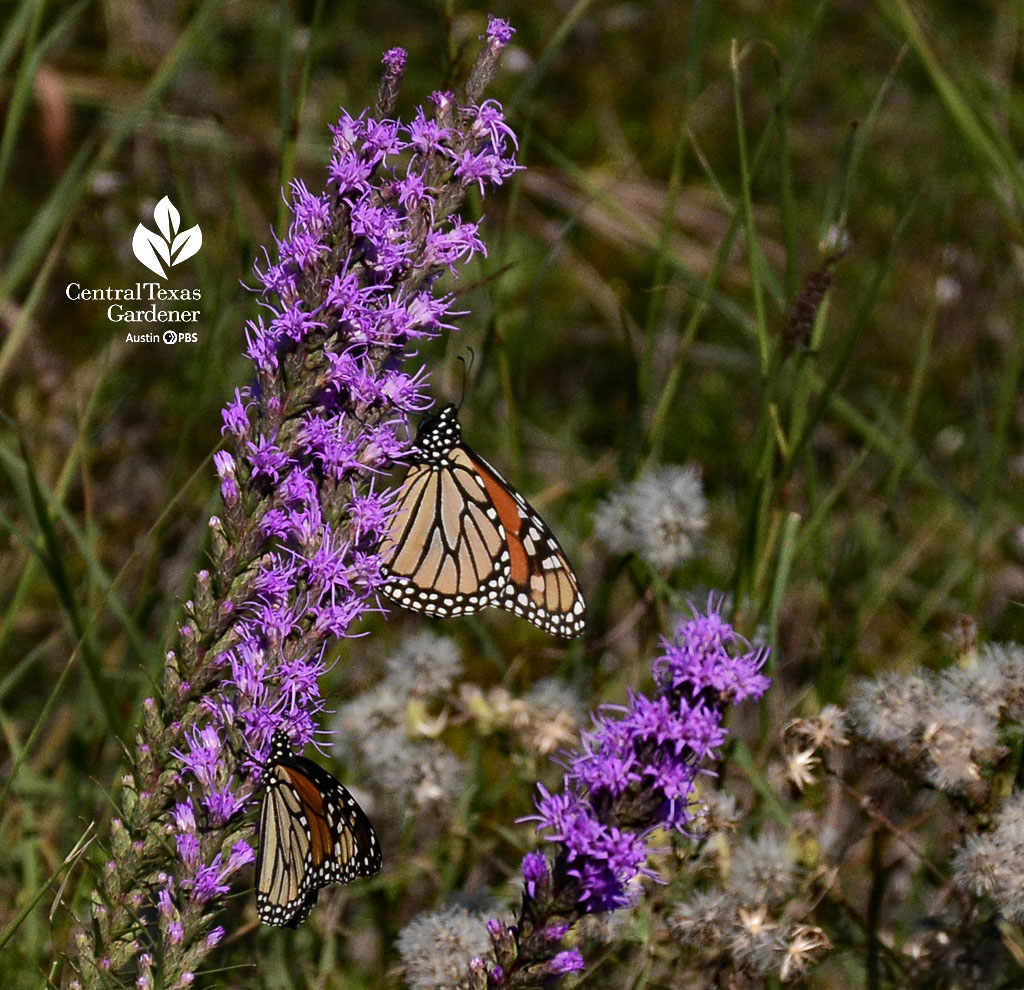
Liatris is greening up now for its purple-flowered show in late summer and fall.
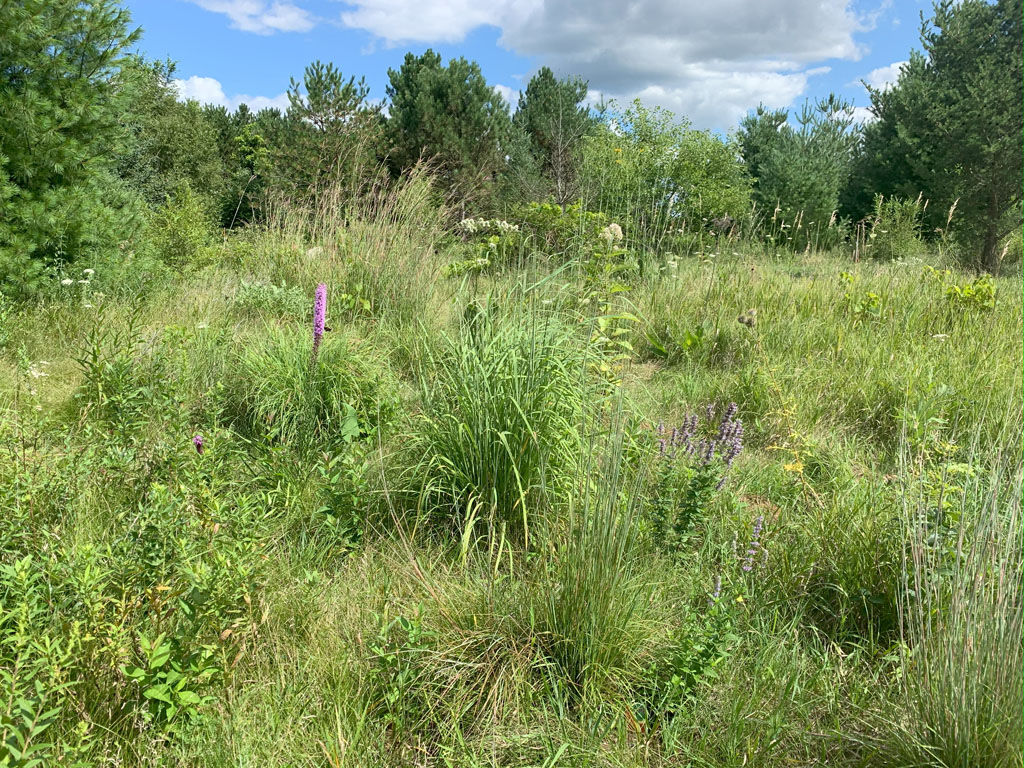
In his Wisconsin small prairie, Wisconsin Master Naturalist Ed Antaramian grows a couple of different varieties, along with grasses and other flowering perennials. He’s also a member of Wild Ones, an organization that connects people with native plants for a healthy planet. I love that he sent this picture to show how we all can be part of Doug Tallamy’s Homegrown National Park (register your garden!).
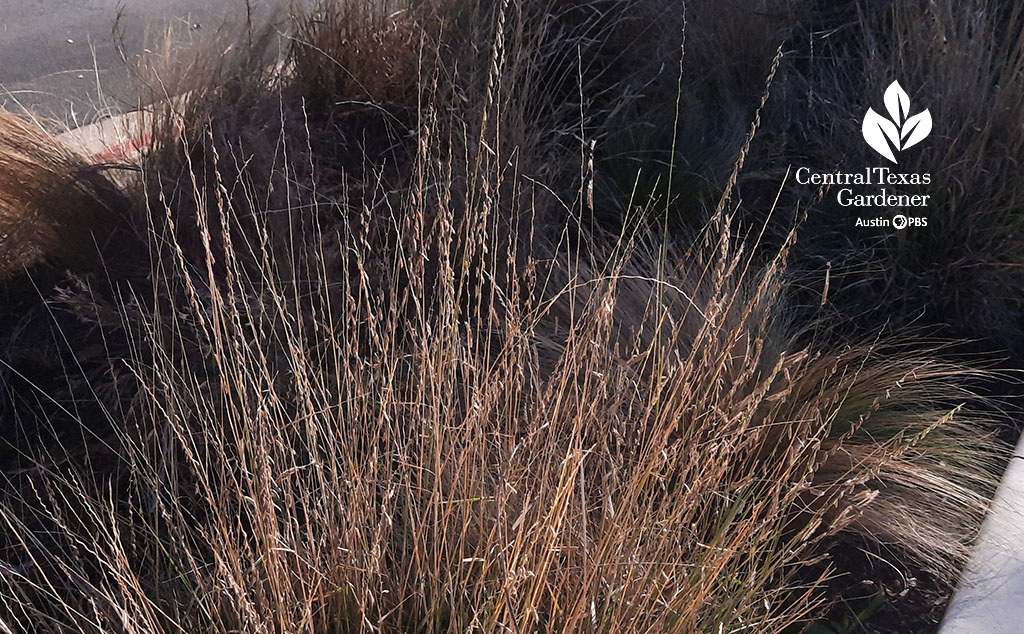
Along with flowering perennials, Drake and John Hart encourage planting clump grasses like blue grama and sideoats grama. I’d heard that grasses are host plants for some butterflies and skippers–Drake shared a great video of a skipper laying its eggs on sideoats grama at The Nectar Bar.
Here’s Drake’s plant list (we didn’t get to them all).
Follow The Nectar Bar on Facebook and on Instagram for updated plant availability and hours.
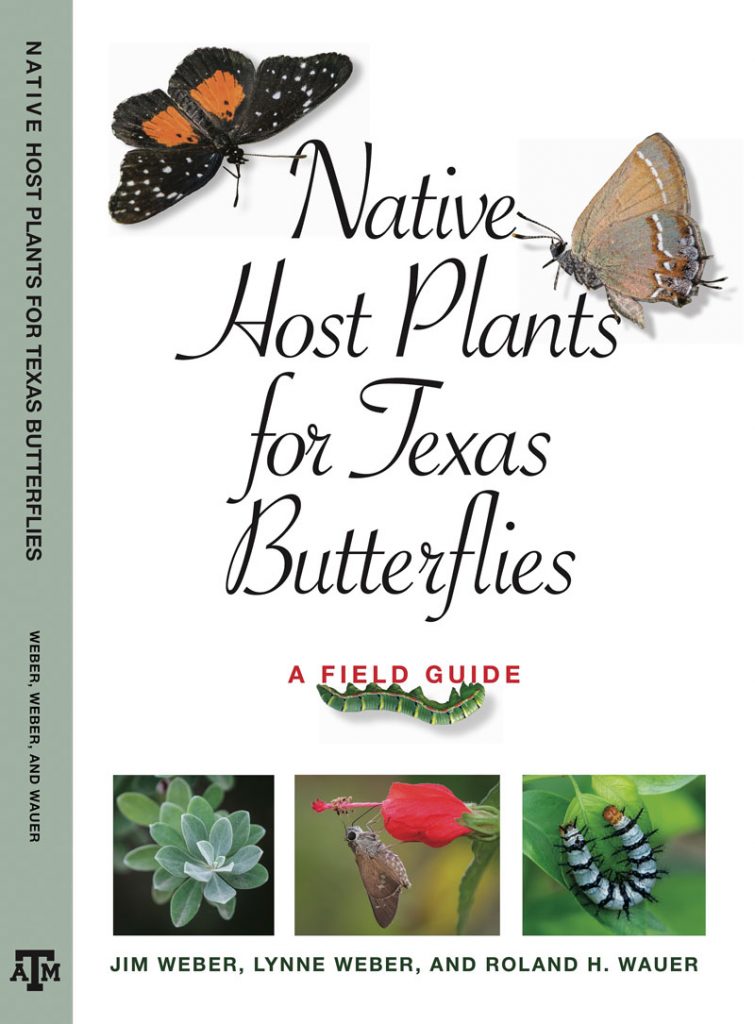
To learn more about host and nectar plants, check out Native Host Plants for Texas Butterflies, by Jim and Lynne Weber and Roland H. Wauer. Great information and outstanding pictures to identify butterflies in all stages!
Find your local chapter of the Native Plant Society (who may hold plant sales and swaps) and Texas Master Naturalists.
Watch Drake’s helpful summer pruning tips, one of our fun working from home pandemic talks!
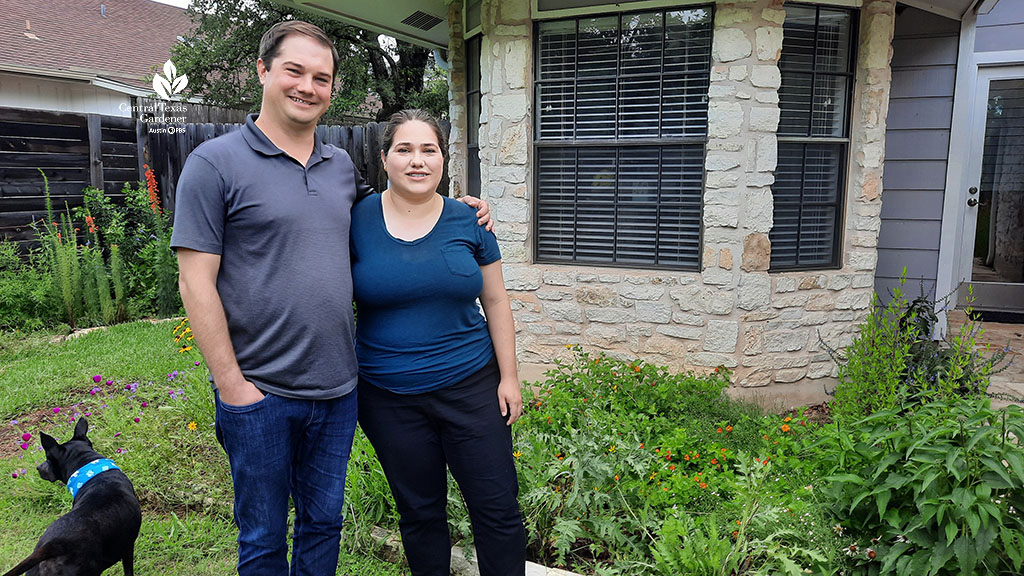
Next, new gardeners @falsedayflower Michelle and Louis Lay got started with native plants at the Austin Native Plant Society. Later they trained to be Capital Area Master Naturalists.
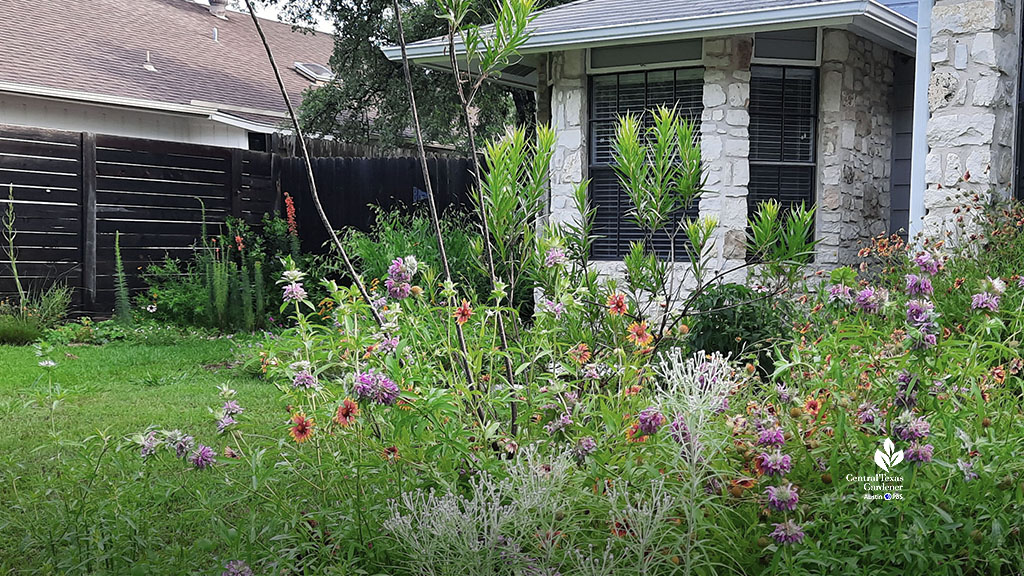
One nook at a time, they dug up grass for habitat gardens from the front door to the curb. In no time at all, they went from “no wildlife” to gratifying crowds of pollinators and birds, including hummingbirds.
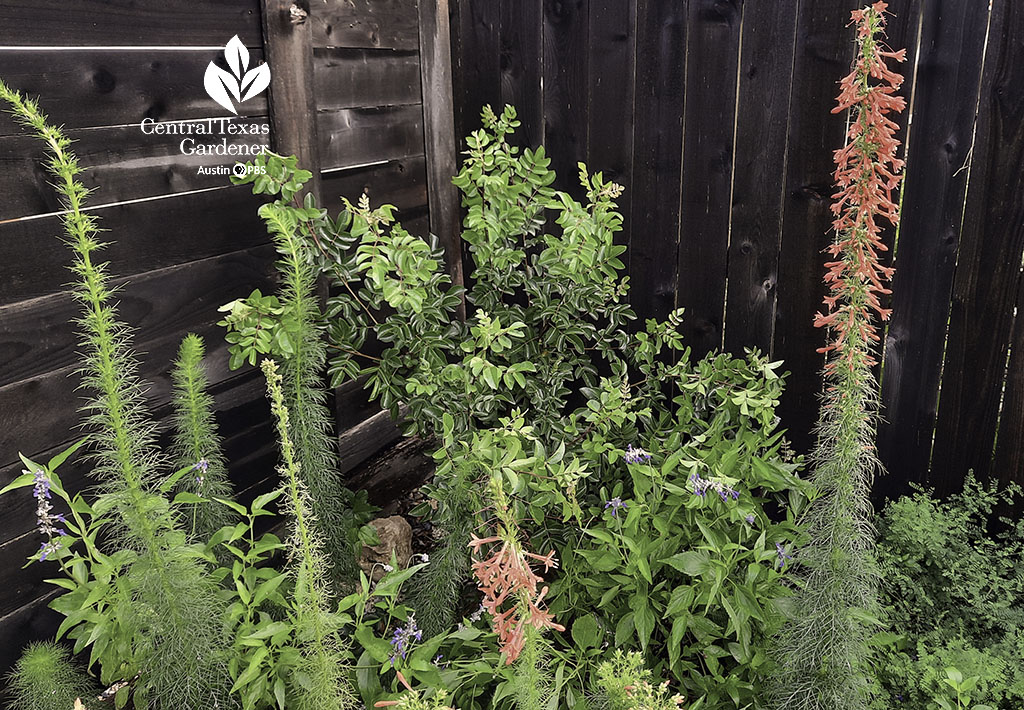
Read more about their garden.
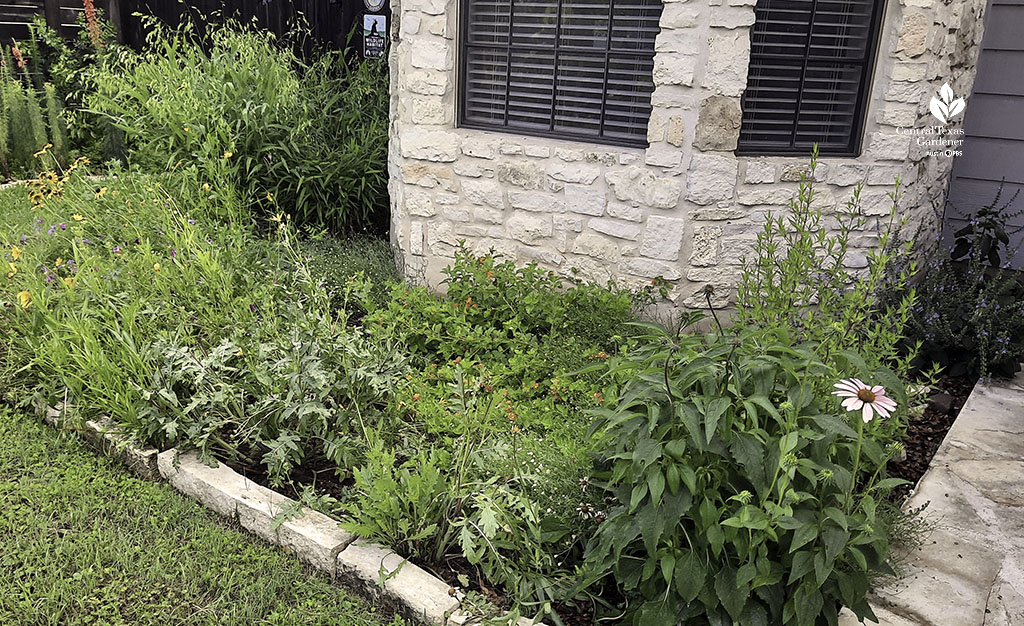
Get Michelle’s plant list.
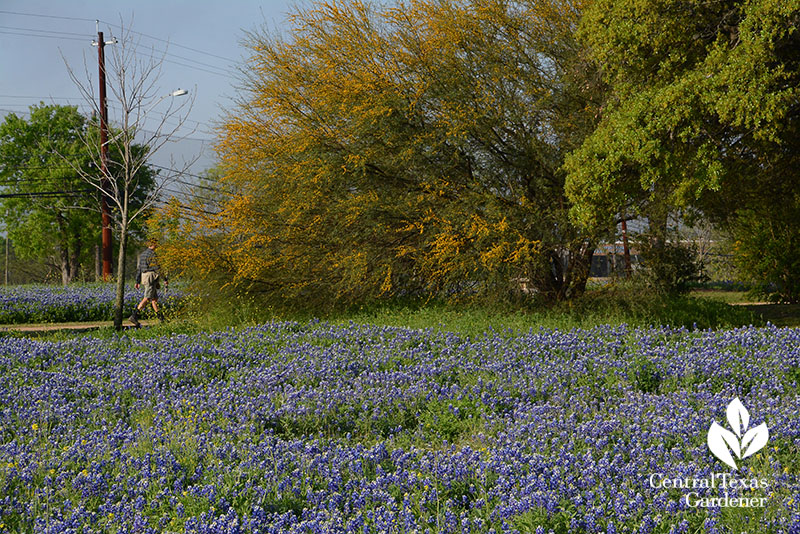
Now about those wildflowers: Why is one spring better than another? Daphne explains that we need rain in autumn for seeds to germinate and grow. Also, many seeds, like bluebonnets, have hard seed coats that require scarification, ensuring that successive generations don’t all sprout in the same year.
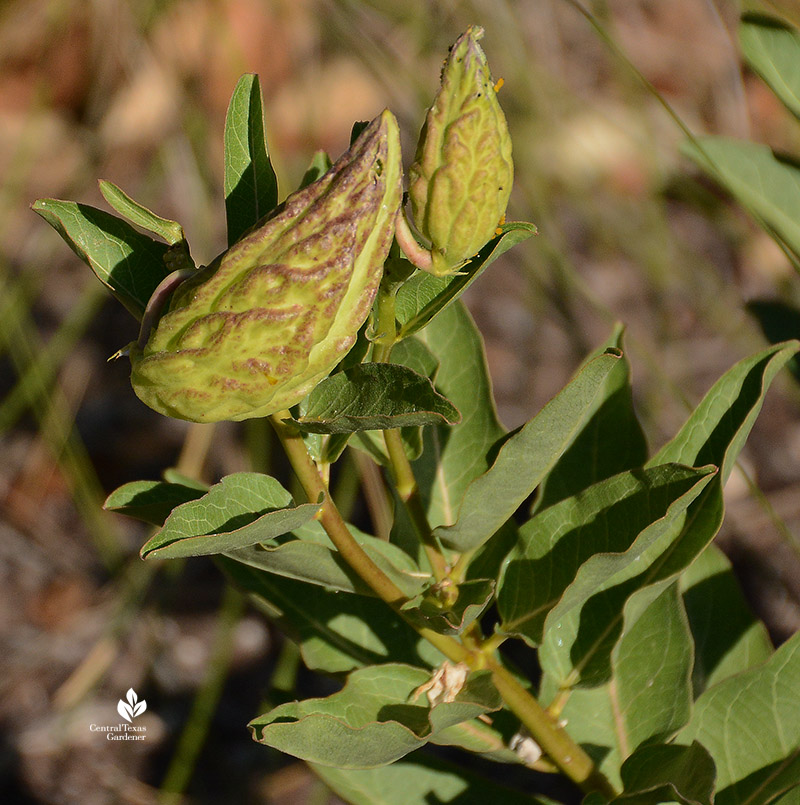
In nature, as Sonia Koschoreck demonstrated with milkweed seeds, wind, rain, rocks, or even stomping animals can break up seed coats. It can even take years to do it.
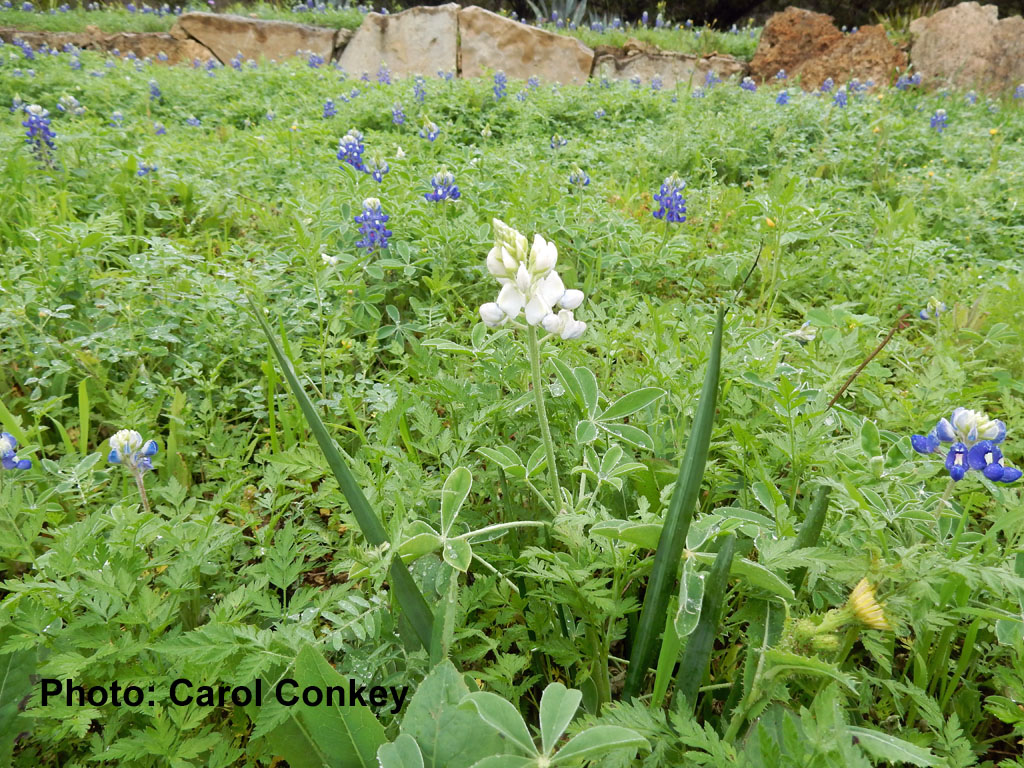
And why do some bluebonnets show up white, as they did for viewer Carol Conkey in her patch off Highway 71? “Well Carol, your lovely white blooms, along with various shades of pink,” Daphne said, “are a recessive gene trait in BLUEbonnets, and so, the only way to ensure reliably having them in the future would be to separate them from the blue ones, to keep the plants from cross-pollinating.”
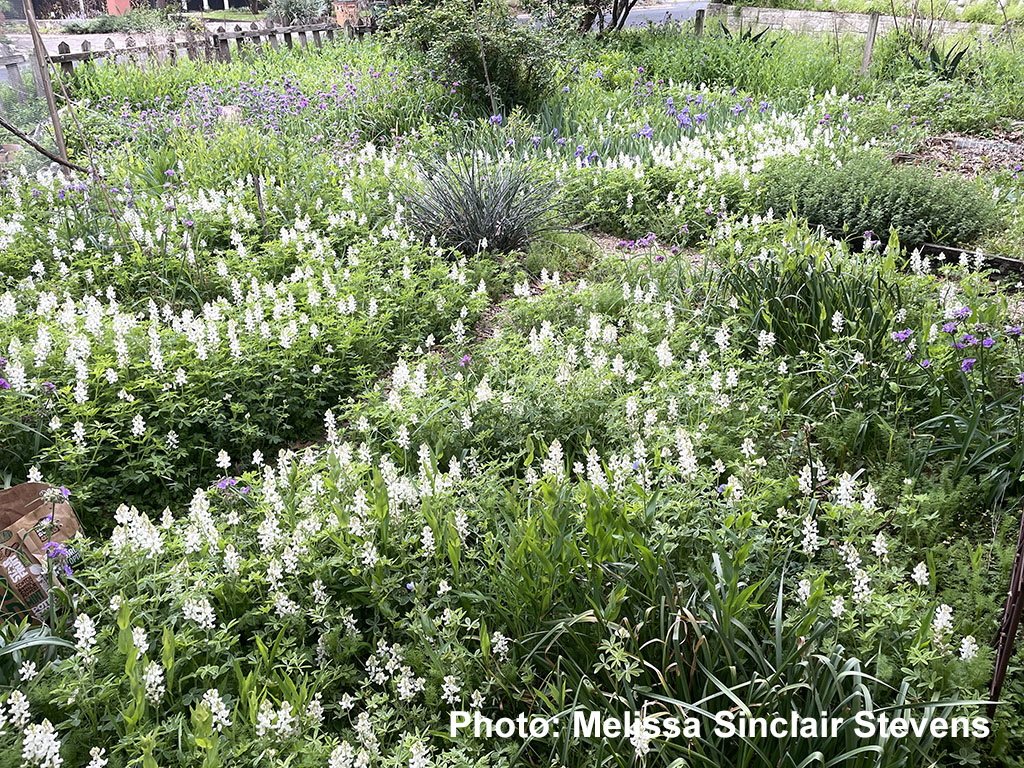
Look at this amazing field of white bluebonnets that Melissa Sinclair Stevens cultivated in her front yard. “I started with one white one 20 years ago and now I have a yard full,” she said. And you bet, she pulled out blue ones so they wouldn’t cross-pollinate. “I think I’m at about 90% true now. Still some blues, but I don’t know if it’s because the whites didn’t come true, or from old blue seed that took a long time to sprout.”
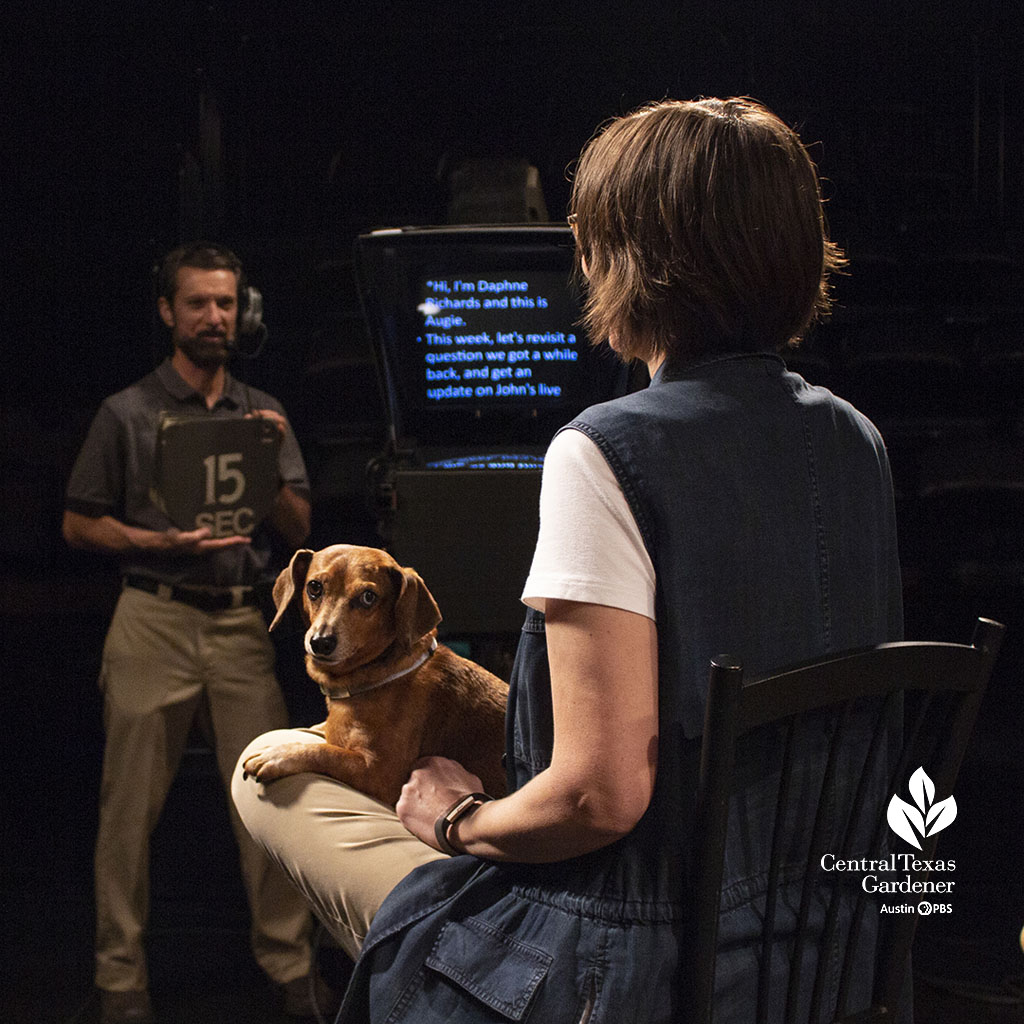
Now, we have sad news to share: Daphne lost her beloved Augie on January 23, just days before his 14th birthday.
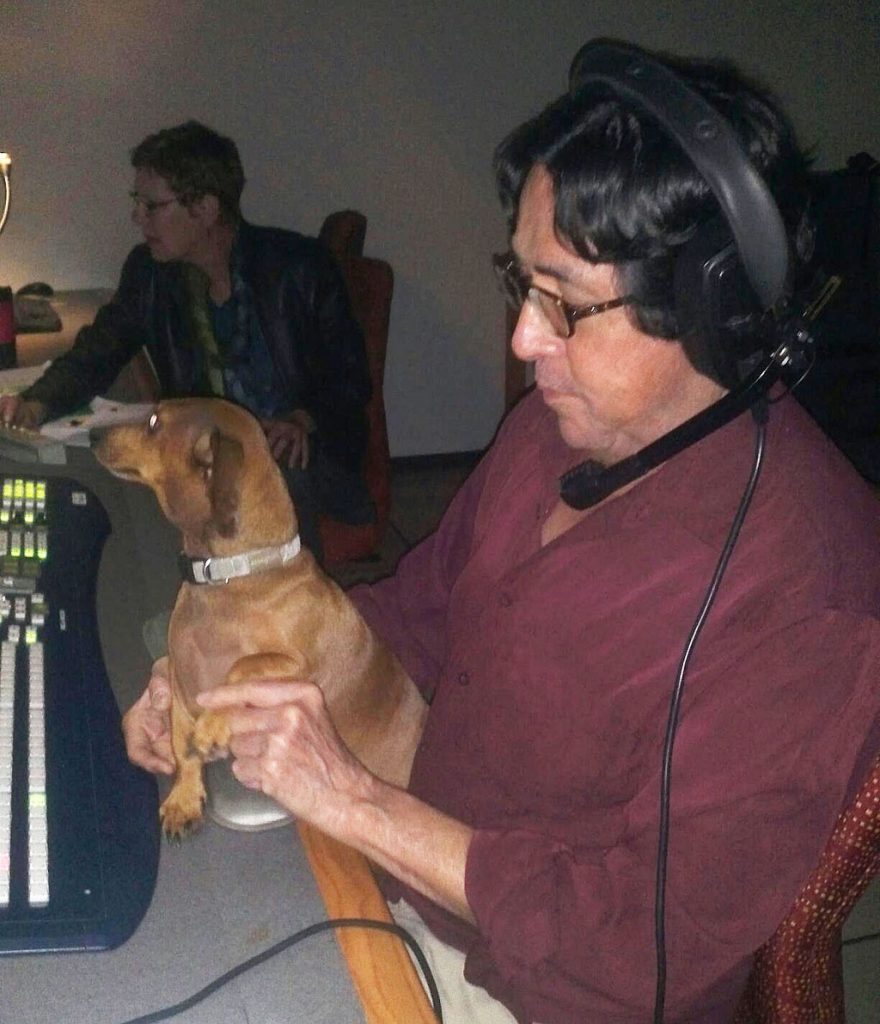
Since 2010, he’s been a lovable member of our team, racing into the studio to give everyone a big kiss.
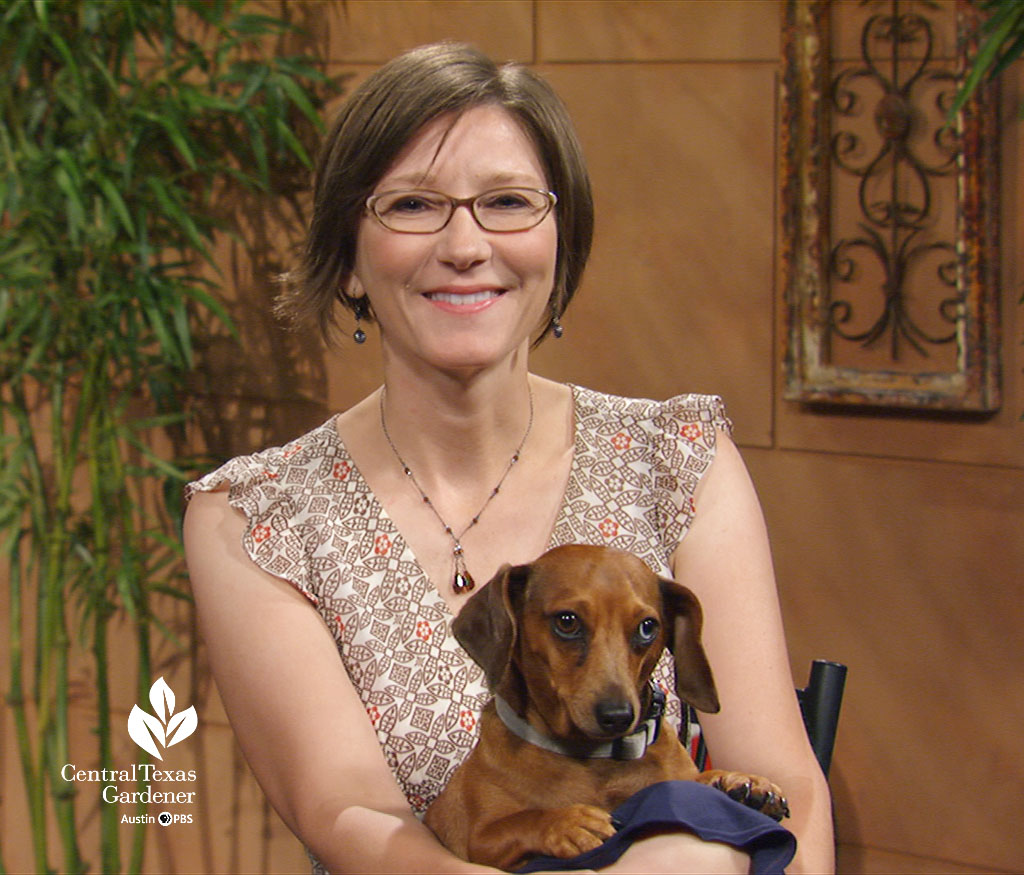
Eventually, he even knew Daphne’s cues and looked straight into the camera when the red record light went on! This picture’s from spring 2013.
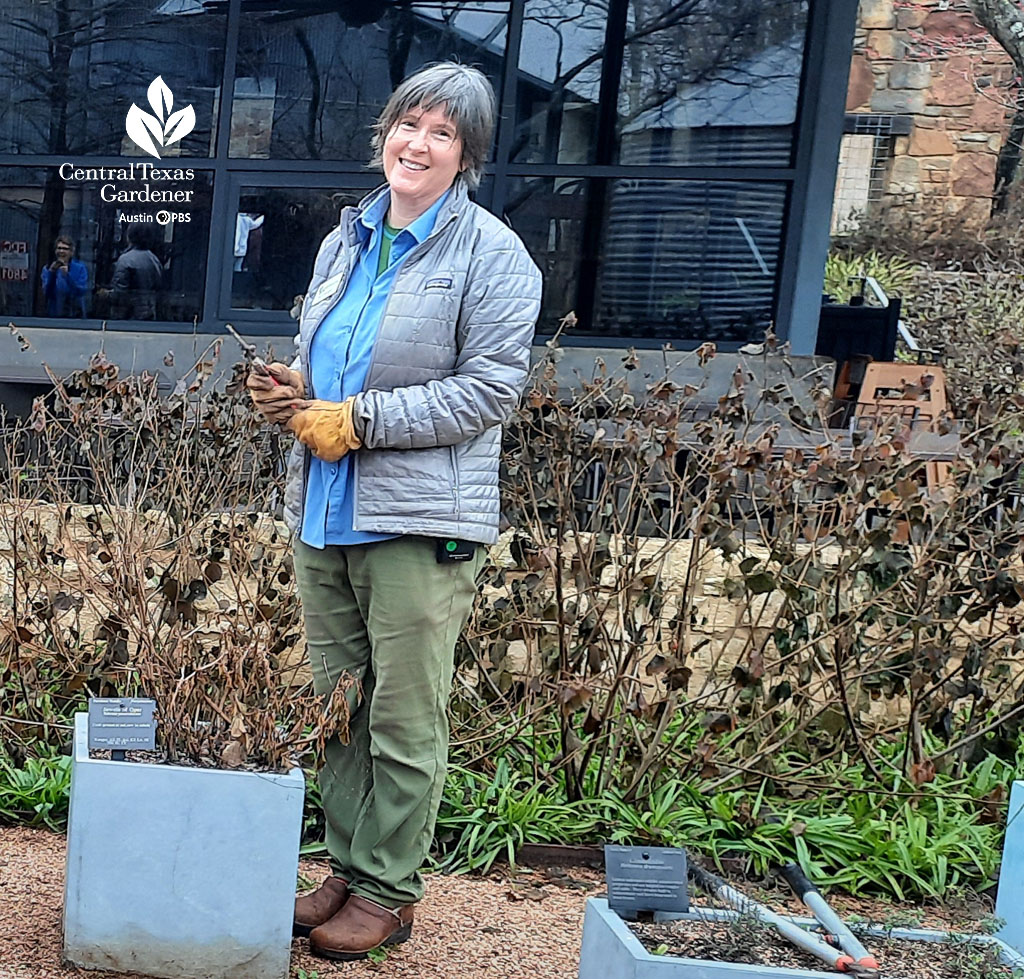
I bet your wax mallows (turk’s caps) are emerging from winter dormancy, just as mine are. If you haven’t clipped them back, see how to do it with Leslie Uppinghouse, horticulturist at the Lady Bird Johnson Wildflower Center. Plus, see how to trim as summer comes along.
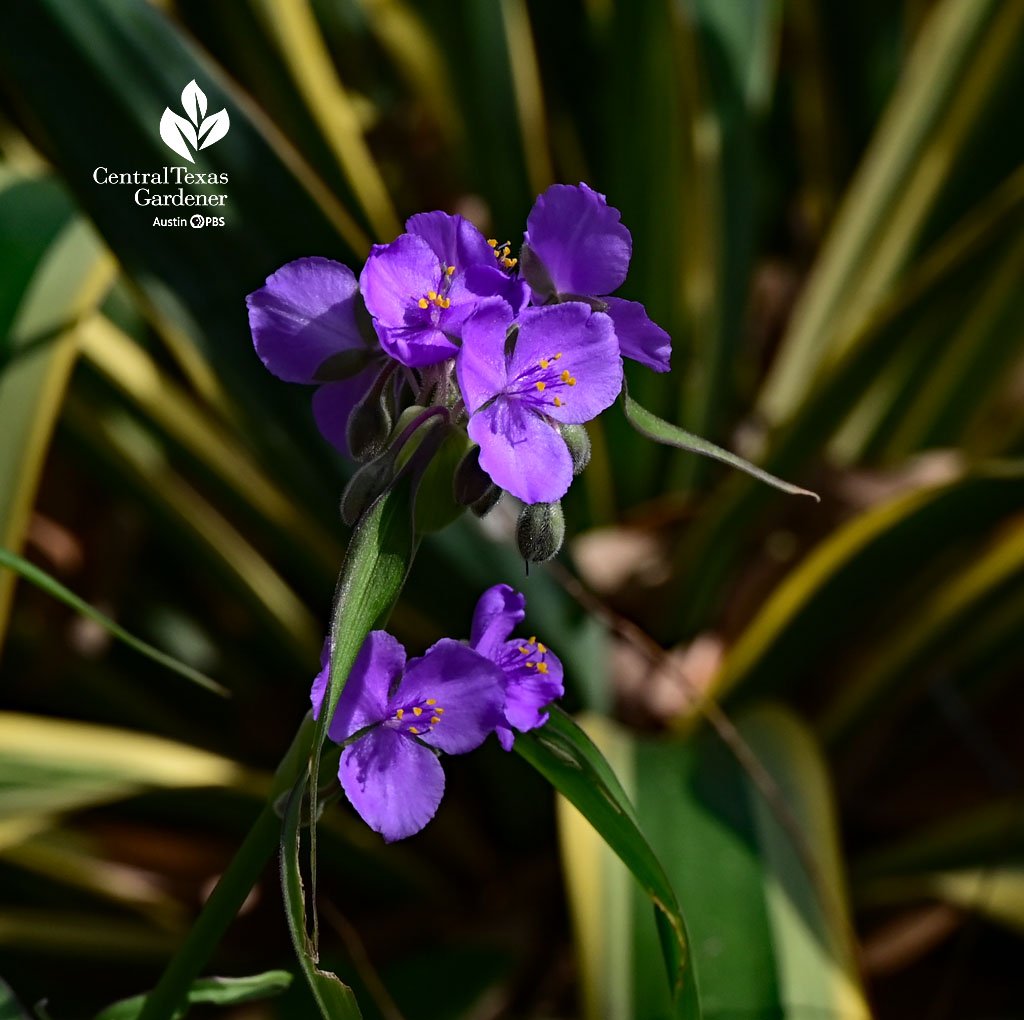
They underplanted with native spiderworts (Tradescantia gigantea) for evergreen winter interest and stunning spring flowers that bees and butterflies adore. Mine have been cheering us on since late February. If you want to spread their seeds, watch the seed heads as they start to brown up. You can also divide them.
Add to your native plants at the Wildflower Center’s Spring Plant Sale!
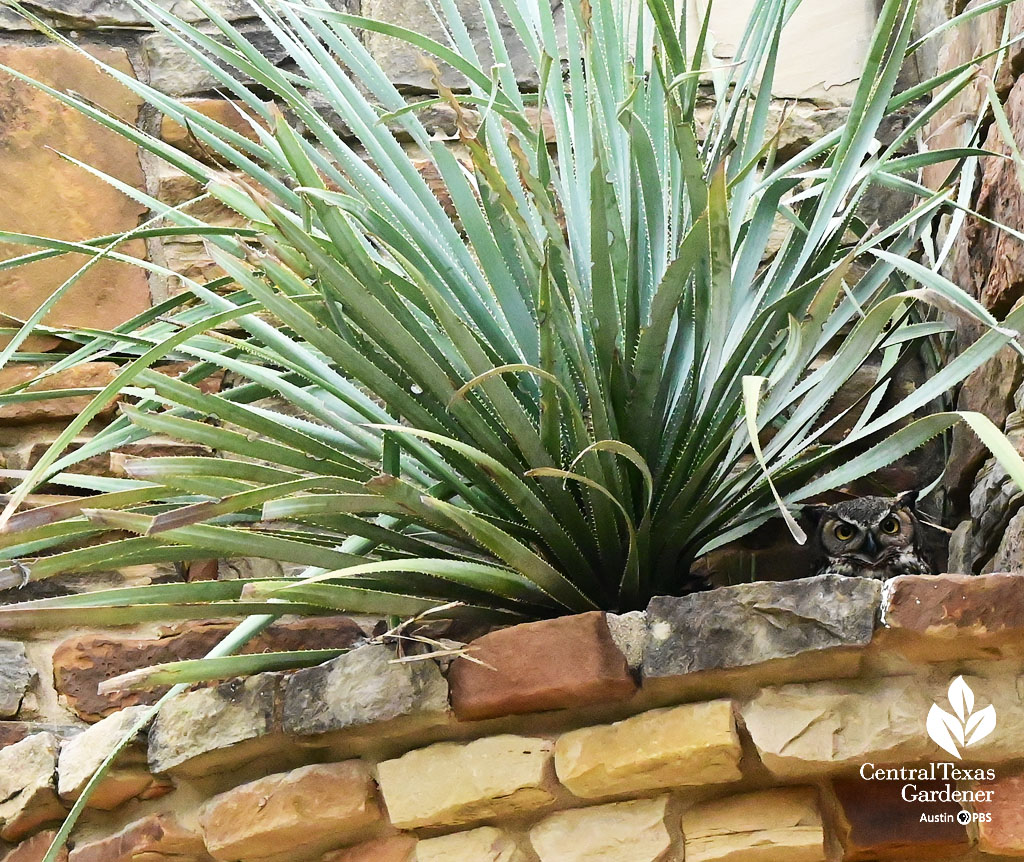
And if you can’t get a glimpse of the Wildflower Center’s lovely great horned owl Athena as I did last year, now you can watch her live from the Cornell Lab of Ornithology’s owl cam! This is her 14th consecutive year to lay eggs and raise her owlets in the safety of a sotol atop the stone entrance.
Watch this episode now!
Thanks for stopping by! Linda

